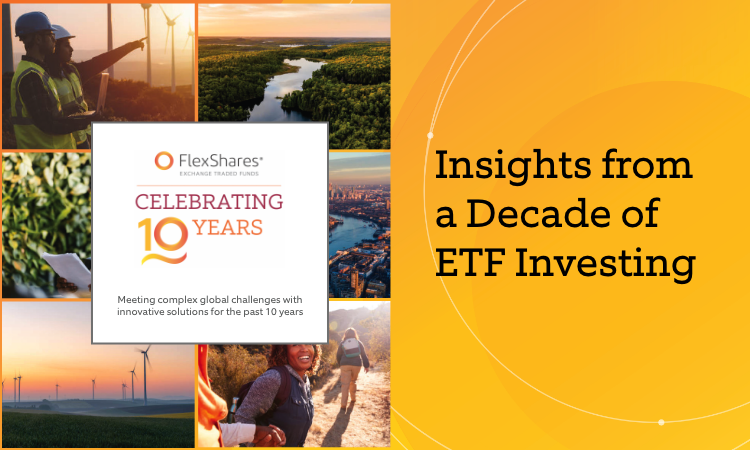
We founded FlexShares to put investors first. Events of the past 10 years have validated our approach.
FlexShares was born in the aftermath of the 2008 financial crisis. We saw how ETFs could help meet investors’ needs through liquidity, transparency, diversification, and low cost. But the market’s collapse during the Great Recession shone a bright light on certain drawbacks, from hidden risks to industry concentrations. We saw that in some ways, simply mirroring market-cap weighted indices could impede investors’ goals instead of advancing them.
We resolved to build ETFs around investors’ needs. That inspiration led us to create strategies that combine active design with passive management.
In the decade that followed, our ETFs have demonstrated their durability through flash crashes, Brexit, COVID-19, and countless other market events. Here are five principles that have guided us along the way.
1. Maximize the benefits of diversification
Investors need diversification they can count on. That’s why we build portfolios that balance many different sources of risk and return.
Applying a factor lens can help us build and maintain that balance. For example, the value, size, and dividend yield factors have outperformed during the current economic recovery, as they have in past recoveries. Also keeping a degree of exposure to the low-volatility factor helps to manage the risk of an unexpected downturn — for example, due to a resurgence of COVID — without radically changing the structure of the portfolio.
2. Target persistent and repeatable drivers of return
Why do investors invest? To try to reach their goals. So when we build our ETFs, we emphasize specific attributes that historically have been rewarded with risk-adjusted returns. Focusing on those underlying drivers of investment results, rather than weighting by market capitalization, is intended to produce more stable and reliable returns through a variety of economic and market environments.
Take 2020, when many companies that traditionally paid high dividends suddenly couldn’t sustain their payments. Our quality scoring methodology, which takes cash flow1 metrics into account, helped to support our strategies’ results.
3. Avoid hidden risks
Investors need to get as much return as they can for the level of risk they take on. We try to meet that need by building efficient portfolios: understanding the risks to a strategy, making sure investors are adequately compensated for them, and avoiding or minimizing risks that don’t offer enough potential reward.
For example, traditional natural resources strategies tend to concentrate in the energy sector, making them sensitive to the wide variety of uncompensated risks that drive oil prices. That exposure can undermine results when oil prices plummet, as they did during 2014 and 2020. Our natural resources ETF diversifies broadly throughout the sector, reducing exposure to those risks.
4. Anticipate emerging risks
Investors invest for the future, not the past. The coming decade is likely to feature at least as much change as we’ve witnessed in the past decade. Those changes bring new risks, and ETF strategies need to adapt to account for them.
For example, issues related to climate change and the transition to a low-carbon economy already are introducing a whole new set of investment risks. Those changes may challenge the utilities sector, as well as the low-volatility strategies that tend to hold large weights in it. FlexShares includes sustainability scoring in its portfolio design, helping to manage this growing risk.
5. Hold for the long term
Many of investors’ most important goals are decades in the future, so we build our strategies based on long-term data, and investors should be prepared to hold them for many years.
The past decade has been eventful, to say the least. We believe these experiences have validated our inspiration to build better ETFs. And they strengthen our conviction that thoughtful investment strategies will continue to help investors meet their objectives in the decades to come.
1. Cash flow is the cash that has been generated (or spent) on assets that are intended to produce a profit in the future.